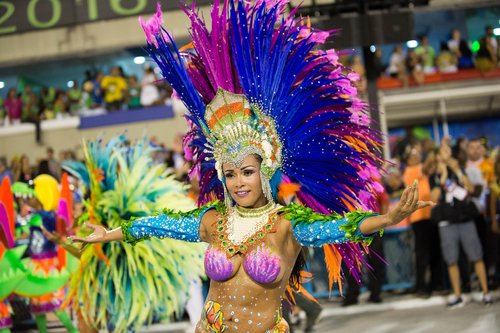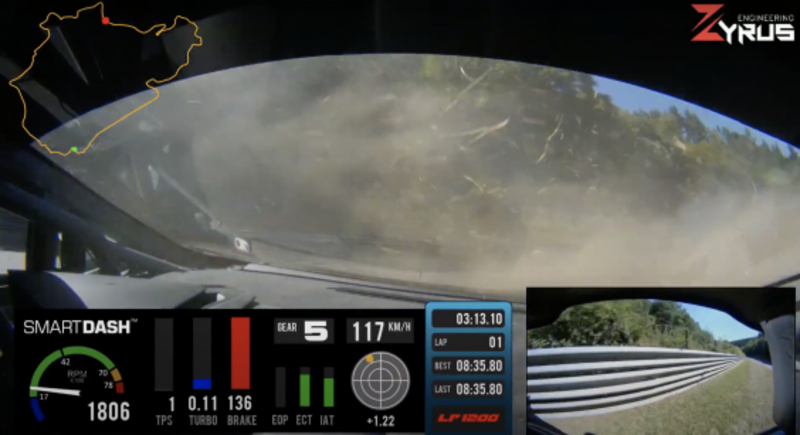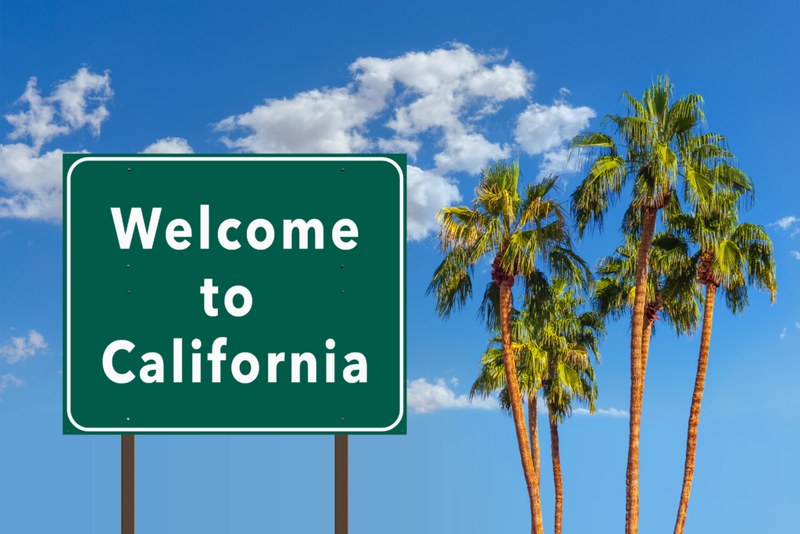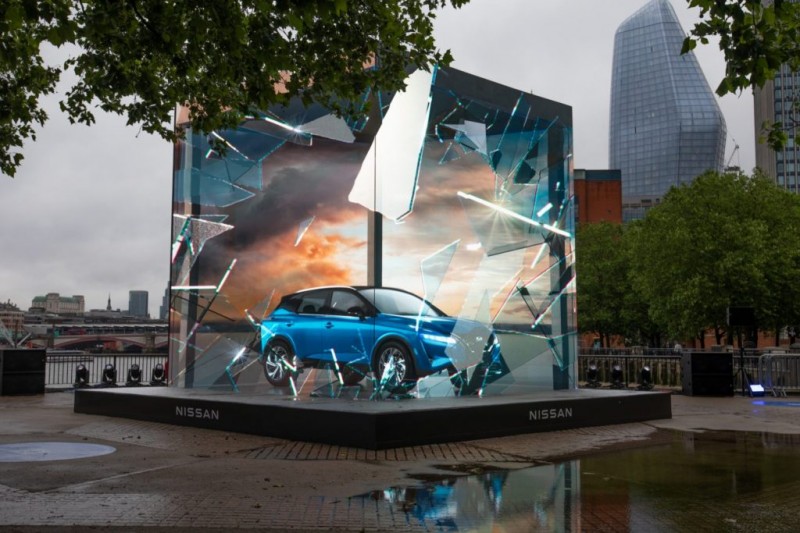Your Ultimate Guide to Rio de Janeiro
Seaside Cycling
Rio once had a bicycle hire scheme, sponsored by Banco Itaú, but it was not really consistent because the bicycles were frequently broken. But, now the system works better than ever. They now use three-gear bicycles that are available for rent throughout the city for as low as £3 for three days. You can enjoy cycling along the seaside with biking lanes that extend from the Marina da Glória through Aterro do Flamengo park, where you can see people jogging, families and friends hanging out, having picnics, some rope walks as well as samba rehearsals, to Urca, the Sugarloaf Mountain, and Copacabana Beach. The beachfront pathways continue toward to Ipanema, leading to Leblon. Half of the waterfront highway is closed on Sundays, which makes these distinguishing orange bicycles a typical Brazilian way to get to the beach. By the way, you need to register on the website, which is in Portuguese.

Craft, Food and Music Fair
The Feira de São Cristóvão is another must-go place in Rio. It is a superb shabby smorgasbord of delectable food, fascinating music, and goods from the northeastern part of the country sitting in a concrete stadium. You can reach the place with a taxi for about 10 minutes from São Cristóvão station. One time, it was on a Friday, a man wearing a vest with leopard print, sang northeastern pop music along with a keyboard while kids were playing football. The fair also hosts popular artists. Don’t be a surprise to see local foods such as sun-dried beef, also called Carne de sol, and mocotó, which is a rich and fatty meat soup. These traditional northeastern dishes are quite common in menus. Try out the Guaraná Jesus, a well-known fizzy drink in pink and blue cans that are sold beside the rapadura, a sweet treat that is made from raw sugar cane, and folk memorabilia. Brazilians also love singing together in groups in one of the karaoke bars for a loud and fun night.
Explore the Old Port
If you could remember the 2016 Olympics held in Rio, there’s nothing much from it that would remind you of the very special event, except for one thing – the old port area that was restored by the city. The once unattractive flyover is now an open and expansive pedestrianized square. They call the place Praça Mauá. Another great idea to spend an afternoon in Rio is to take a walk along Orla Conde, also known as Boulevard Olímpico. It is a peaceful, seaside path from historic Praça XV, where you can see ferries going to Niterói moor, then you would walk by a naval college and sights of colonial Ilha Fiscal. You’d enjoy street performers and food trucks, but the area provides a quiet atmosphere that is ideal for families. You’ll be amazed by the enormous graffiti artworks painted on the extensive avenue of warehouses that are closed to traffic. On the waterside, an awe sight of Museu do Amanhã or the Museum of Tomorrow would make you feel like you are in a futuristic movie. The museum is a spectacular concrete bromeliad with interactive scientific displays, but you need to fall in line to get there.
Sidewalk Fish Bars
Rio locals, popularly known as Cariocas, just love the street life. They enjoy eating seafood and chilling out in the simple and not so fancy street-side food stalls and bars. These food outlets are known as pé sujo, which means dirty feet. This is how two fish bars on the street at the edge of a loud and boisterous nightlife neighborhood Lapa became popular. This is where you can find ice-cold beer, too. Cars passing by, however, would sometimes come too close to the tables and chairs spread over the roadway, which is so dangerous, as many people are strolling by. Head to Bar do Peixe and Bar Peixe e Cia and dig into a delicious meal of leão velososea food soup for only £2.50, gigantic festive platters of fried fish, rice, salad, and pirão, which is a thick fish gravy, serving a couple or small family for about £10.
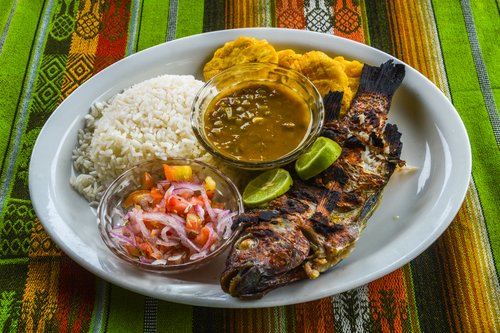
Favela feast
Visit one of Rio’s favorite restaurants, Bar do David. It sits near Leme Beach halfway up a hill at the start of the Chapéu Mangueira favela. It has everything that a native Brazilian want. From the excellent food, the friendly host, and the relaxed and informal atmosphere in late afternoons. The laid-back place provides plastic tables and chairs on the street. This restaurant features a seafood bean stew called feijoada de frutos de mar, which is served for two at £16.50. The carioquinha is also a must-taste, must-eat dish. It is prepared with beans, sausage, rice, and cabbage for only £6. You have to try also the prize-winning starters – the seafood croquettes. And, don’t skip their artisan beers.
Waterside Art
If the Museum of Tomorrow amazes you, then Museu de Arte do Rio (MAR) will not disappoint you. This is six-year-old museum displays both the art and history of Brazil. It is accessed through a former bus station, with a rooftop that provides a spectacular view of the city, and down to a colonial mansion next to it. There, you can find remarkable paintings and pictures of the landmarks in Rio that are exhibited permanently. Temporary exhibitions are also done there, which are thought-provoking and expertly curated. These arts typically focus on modern Brazilian art that deals with sensitive themes such as poverty, slavery, and injustice that once had destroyed this port centuries ago.
Street Markets
Spend a Sunday at the biggest street market in Rio’s South Zone (Zona Sul), the Feira da Glória. From early morning to mid-afternoon, this place is bustling with people, food, and life. Wander around and see all sorts of stuff being sold, including manure – with the seller called King of Shit! In the midst of the beautiful chaos, you’ll find musicians play chorinho, a popular instrumental Brazilian music genre, in the adjacent square. This Sunday routine for native Brazilians are also a great way to buy the cheapest produce, spices, household stuff, and even live crabs and other food items. Along the way, you can grab some delicious pastry that is deep-fried and pair it with a sweet sugar cane juice. You can also buy fresh fish and have it cooked at the Damasio’s Galeteria for only £3. You can reach the restaurant by just walking a bit to the end of the market and pavement, where you can hear a live samba combo in the bar next to it.
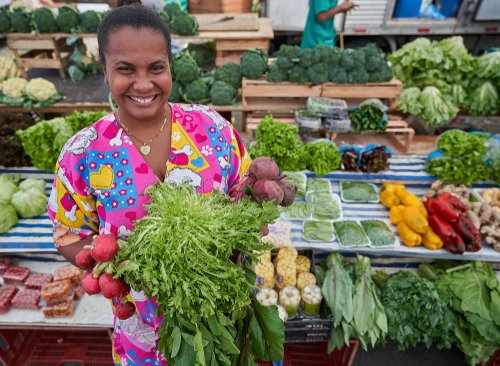
Forest Strolls
You can also have a lazy walk down the Cláudio Coutinho path, where you are actually at the edge of a metropolitan area packed with over six million people. The trail embraces the foot of Urca Hill and Sugarloaf Mountain, which gives you an astonishing view of the bay below. Cycling and skateboarding are not allowed in the area, making the place serene and so peaceful. The only thing you can hear is the distant chit chat of monkeys. Note, however, that no visitor is allowed to feed the monkeys. Going left from its starting trail is a steep hiking path through the woods that would take you 45 minutes to reach the top of Morro da Urca, which is the cable car point. Hop in on one of the cable cars to go to the Sugar Loaf Mountain or go back down.
Botafogo Bars
If you’re up for a gastronomic adventure in Rio, head to Botafogo. This place used to be dull, but bustling with people and notorious traffic. This is also where you can find cheap rents. In recent years, it continued to progress with the establishment of new bars, night clubs, and restaurants, giving the city a modern look. If you are craving for something Peruvian, Ceviche RJ is the best place to be. It a Botafogo favorite pavement café, serving their signature dish, ceviche for £5.50 and a delightful dish of chicharrónes with fish and squid for only £7.50. The ambiance is great with fascinating salsa music and cheaper brand artisan beers. Nearby from Comuna is also a great bar and restaurant, serving burgers with DJs leading a younger and trendy crowd.
Samba Sessions
If samba lessons interest you, take a walk to Andaraí. The sessions are every Monday in the late afternoon or early evening at the Renascença Club. It’s a worthwhile activity to engage in, with the lively music, the atmosphere it provides, and definitely the acarajé – a burger made from beans and some Bahia prawns with a dash of spiciness for only £3. These sessions are traditional samba da roda. This means that people would gather around, dance, and sing along with the musicians, who would sit at a long table. On Mondays, they would have the Samba do Trabalhador or the traditional workers’ samba. There, in a spacious, white-painted yard, a great samba composer named Moacyr Luz, would lead a group of musicians, delivering a precise, flamboyant, and passionate music to an audience, who would be buying buckets of ice-cold beers.
